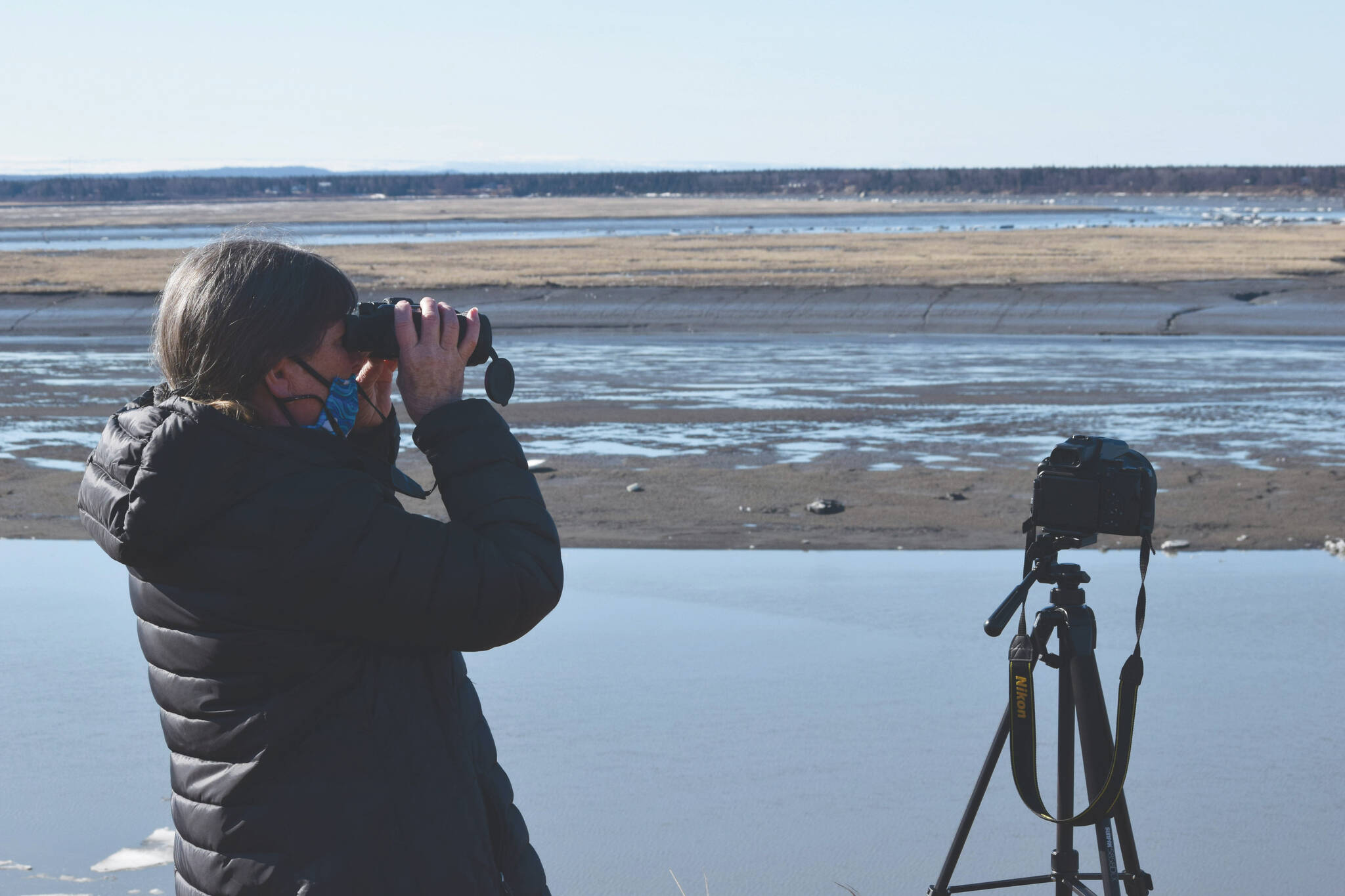The end of May also marks the end of the spring beluga whale monitoring season in Southcentral Alaska.
Teresa Becher, a volunteer citizen scientist coordinator with the Alaska Beluga Monitoring Partnership, said this season was even more jam-packed than last.
“This spring has been an incredible monitoring endeavor,” she said. “They came in much earlier than we have seen in the past.”
The partnership is a collaboration among organizations that allows citizens to contribute to beluga whale monitoring in Cook Inlet. The project is part of a larger effort by the Defenders of Wildlife and the National Oceanic and Atmospheric Administration, with help also from the Alaska Wildlife Conservation Center, the Alaska Wildlife Alliance, Beluga Whale Alliance, Cook Inlet Photo ID Project and Kenai Peninsula College.
The organizations work to observe the whales’ migration patterns, determine prey, listen to their sonar signals and conduct aerial surveys, among other things.
Becher said the first beluga sighting on the Kenai Peninsula was in early March, almost a week before the team usually starts looking out for the whales. That doesn’t necessarily mean the animals migrated earlier than usual, she said. It could mean there were more volunteers out searching for them.
“This is huge because we have our set monitors that go out there for two-hour time frames, but in this case we were trying to decide whether or not we should actually start on March 15,” Becher said. “And we were able to say, ‘Oh my gosh, yes, the belugas were in the river earlier than that.”
All beluga populations are protected under the Marine Mammal Protection Act, according to NOAA Fisheries, but Cook Inlet belugas in particular are listed as a distinct population segment under the Endangered Species Act. A distinct population segment refers to a vertebrate population or group that is specific and significant in relation to the entire species.
Belugas live in Arctic and sub-Arctic regions, and are known for their white color, blubber that helps them swim in freezing waters, and range of vocal sounds that they use to communicate. Cook Inlet belugas and the Sakhalin Bay-Nikolaya Bay-Amur River population in Russia are two groups that are classified as depleted under the Marine Mammal Protection Act — which means they have fallen below their optimum sustainable population levels, according to NOAA.
This makes monitoring the animals all the more important, Becher said.
“Because this particular species never leaves the inlet, every beluga counts,” she said. “Every beluga matters.”
Madison Kosma is a program manager and data analyst at the Alaska Beluga Monitoring Partnership. She said belugas were spotted at each of the monitoring sites, which is more than last year. Volunteers monitor at Ship Creek in Anchorage, Bird Point along Turnagain Arm, the Alaska Wildlife Conservation Center and in Kenai and Kasilof along Cook Inlet.
Because the species is endangered, more monitoring helps officials research the animals. Kosma said some possible factors for the decline in beluga populations, according to researchers in the field, include changes in prey, climate change, contaminants in the water, noise pollution and gaps in socialization between whales.
The last count of Cook Inlet belugas in 2018 was 279 whales, according to NOAA. That’s down 80% from 1979, when there were an estimated 1,300 whales in the water.
But, Kosma said, volunteers helping to locate the species provide valuable information to NOAA and other agencies for conservation efforts.
“It was really rewarding and just kind of shows how important the program is, and just that extra effort to get that documented so NOAA has that on file,” she said.
Reach reporter Camille Botello at camille.botello@peninsulaclarion.com.

